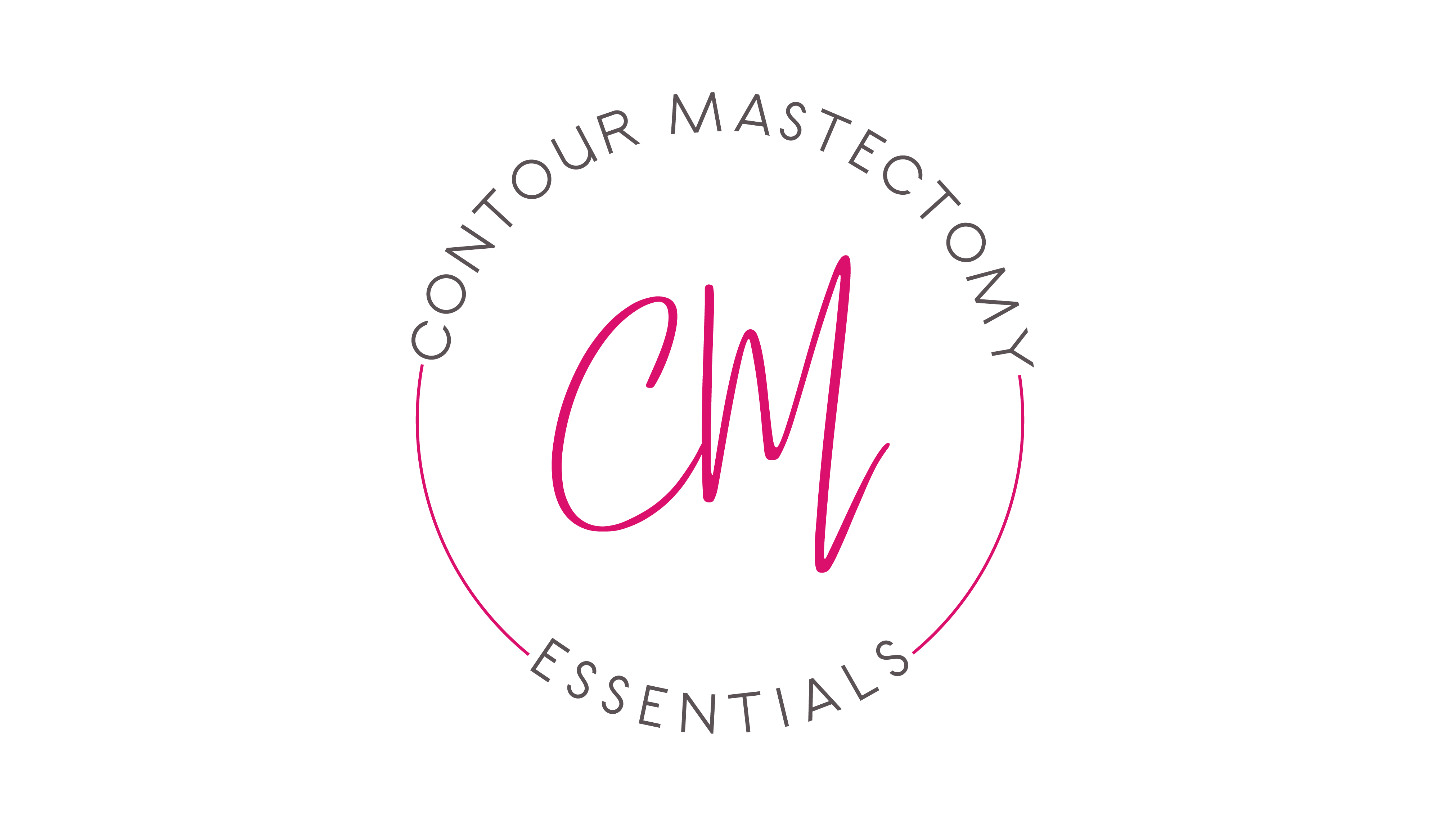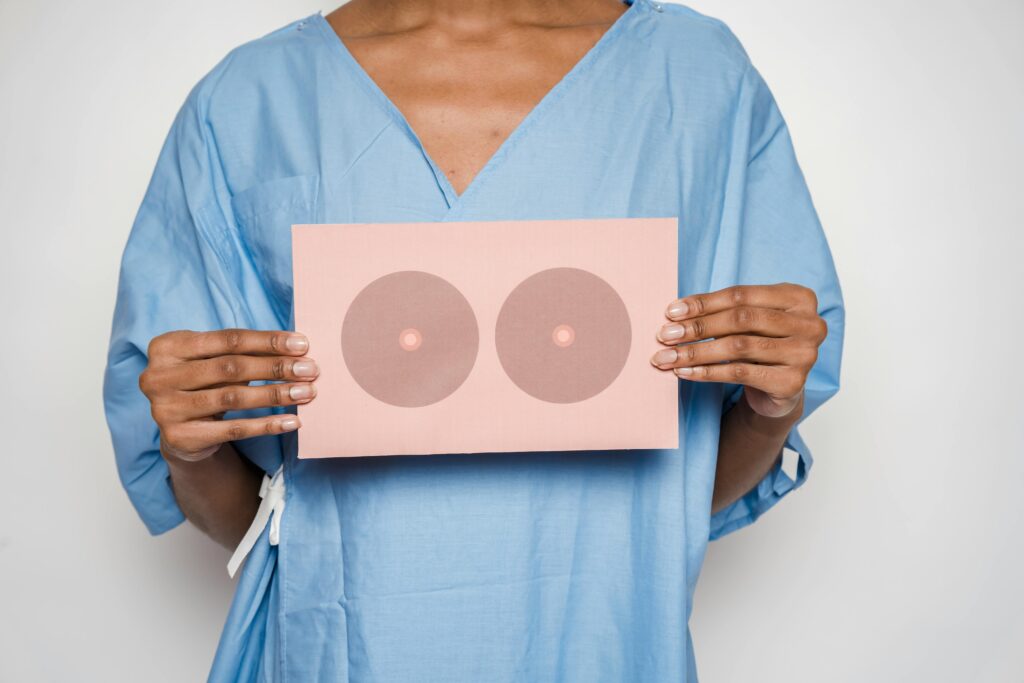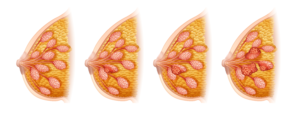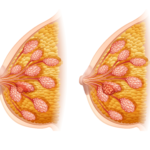It may not be talked about very often, but it is crucial to speak to your healthcare team about perpetuating persistent neuropathic pain after breast cancer surgery.
Breast cancer patients need to know that phantom breast syndrome is common and normal, and the sensations raise awareness of PBS and find ways to address it.
Phantom Breast Pain vs. PSMS
Some women experience only non-painful breast sensations, whereas other women experience phantom breast pain with or without other sensations.
Chronic breast pain is common after breast cancer surgery, affecting up to 50% of women. Pain can stem from many causes, including:
- Phantom breast pain
- Pain stemming from damage to the intercostobrachial nerves
- Pain due to neuromas (lumps of nerve tissue that can form after a nerve is damaged)
- Pain due to other nerve damage
Understanding the type of pain is essential as chronic pain after breast cancer surgery can have a significant effect on quality of life. Fortunately, phantom breast pain is usually less severe than the phantom pain associated with the amputation of a limb.
PMPS Syndrome
Because PMPS is nerve pain-specific, the symptoms tend to involve shooting pain, stabbing pain, prickling pain, tingling, itchiness, or numbness. It may be challenging for providers to distinguish neuropathic pain from other types of pain, so it’s helpful to write down symptoms as the patient experiences them. Be as specific as possible when describing how the pain feels, how often it happens, and when it happens.
Symptoms of PMPS may Include:
- Pain and tingling in the chest wall
- Pain and tingling in the arm
- Pain and tingling in the armpit
- Pain in the shoulder
- Pain in the surgical scar
- Numbness
- Shooting or pricking pain
- Intense itching
Change in Sensation
If you have had lymph glands removed from under your arm, you may experience a loss or change in sensation running down the inner side of your upper arm. This occurs because the nerves running across the armpit to the upper arm, which supply sensation to the skin in that area, often must be disturbed to reach the lymph glands. This can cause trauma to the nerve, which can lead to a variety of symptoms.
- Numbness or reduced sensation
- Sensitivity to touch or pressure
- Burning or tingling sensations
These symptoms are usually temporary and improve or completely disappear about three months after surgery. Sometimes, you may be left with permanent loss or altered sensation in your upper arm (e.g., if the nerve had to be divided during surgery to operate correctly).
Normalcy OF PMPS
PMPS is most common after operations that remove tissue in the upper outside portion of the breast or the underarm area. PMPS is thought to be caused by damage to the nerves in the armpit and chest during surgery. Women who are more likely to have problems with PMPS are:
- Younger women who have had a complete axillary lymph node dissection (ALND) and not just a sentinel lymph node biopsy
- Women who were treated with radiation after surgery
- Women with excess weight
- Women with anxiety or depression
PMPS is less common than it once was because ALND is done less often.

Treatment of PMPS
If a woman is experiencing pain after a mastectomy or lumpectomy, she should talk to her cancer care team. The team may provide the help she needs to be as comfortable as possible during recovery. It’s essential to address PMPS with medications and treatments that work specifically for nerve pain. Standard painkillers and even strong opioid medications don’t work well for this type of pain. However, NSAIDs (non-steroidal anti-inflammatories like aspirin) may help alleviate other types of discomfort the patient experiences.
Some current treatments for PMPS include:
- Physical therapy: While PMPS is regarded as a neuropathic disorder, musculoskeletal dysfunction, and myofascial pain may contribute to chronic PMPS. Physical therapy programs using strengthening exercises and massage help improve shoulder pain by reducing myofascial trigger points.
- Medications: As their names suggest, antidepressants and anti-epileptic medications are typically used to treat depression and epilepsy, but their utility goes beyond those uses—they’re also used to treat PMPS.
- Topical capsaicin: This is an ointment, cream, or other substance that may be applied to the skin. Capsaicin is found in chili peppers and works by decreasing activity and, therefore, the pain sensation in nerve cells.
- Nerve blocks and neurolysis: Pain management specialists help identify specific trigger points along the chest wall or spinal nerves, intervening with non-surgical methods to address peripheral nerve pain. Thoracic paravertebral nerve blocks in most patients have shown immediate but short-term pain relief (lasting less than a month). Neurolysis with steroid injection may offer less profound but longer-lasting pain relief (lasting about six months).
- Autologous fat grafting is a relatively new therapy that is still being studied. Fat grafted from other parts of the body and injected into the breast may reduce pain by providing cushioning and having an anti-inflammatory effect on the tissue around it.
- Autologous breast reconstruction: Abnormal scarring of the chest wall and armpit following breast cancer surgery not only leads to stiffness and decreased mobility but may also compress local peripheral nerves. Surgical removal of scar tissue and reconstruction using the patient’s tissue may help decompress those nerves and provide relief.
- Patients may also find relief with supportive care services, such as acupuncture, yoga, or therapeutic massage. However, researchers are still assessing whether these or other therapies are helpful to nerve-related pain. Be sure to discuss these ideas with the care team and ask for referrals to providers experienced with PMPS.
Summary
(PBS)-The prevalence of phantom breast syndrome (the sensation that a breast is still present after it is removed) varies between different studies. Still, it is thought to occur in 10% to 55% of women following a mastectomy. Phantom breast pain and sensations usually begin within the first year following a mastectomy and often become less noticeable two years after surgery.
Phantom breast syndrome can seriously affect a woman’s quality of life through a combination of both the physical discomfort of the sensations and the emotional distress they cause. For this reason, working with a cancer counselor may be a beneficial adjunct to physical treatments for the disease.
Many oncologists believe that nearly anyone who is facing or has faced breast cancer could benefit from working with a therapist around the many issues that arise. Some studies (but not all) have even suggested that counseling and other forms of psychosocial support may have a survival benefit with breast cancer.
PMPS is chronic nerve pain that occurs after a mastectomy or other breast-conserving surgery.
People with PMPS have consistent pain, lasting for more than three months in the chest, arm, and underarm areas. People may feel tingling, numbness, shooting pain in the area, and shoulder or surgical scar pain.
Treatment for PMPS may help people to manage the condition and relieve symptoms. Treatment may include a combination of methods, including pain relief medication, physical therapy, and psychological therapies.
REFERENCES:
American Cancer Society
City of Hope
MedicalNewsToday
Very Well Heath









